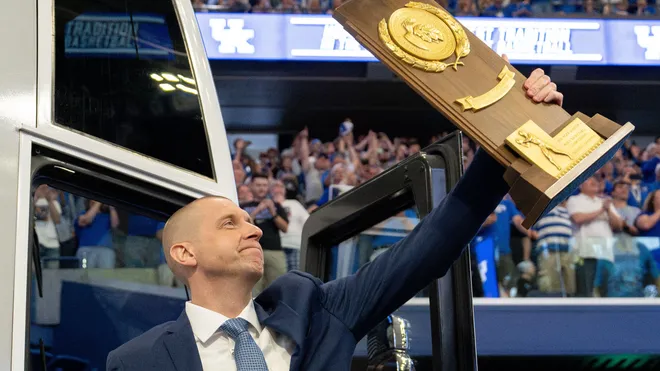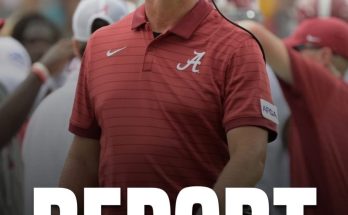CBS Sports has placed Kentucky basketball firmly in the national championship conversation, a development that is both a return to form and a fresh endorsement for a program with as rich a history as any in college basketball. For the Big Blue Nation, it’s a long-awaited acknowledgment of a resurgence they believe has been brewing beneath the surface. For the rest of the college hoops world, it’s a sign that Kentucky is no longer just a blue-blood in name—they’re back to being a force to be reckoned with on the court.
The inclusion of Kentucky in CBS Sports’ list of top contenders for the 2025 NCAA national championship is not a gesture based on nostalgia. It’s rooted in tangible, measurable progress. With a retooled roster, increased depth, a reenergized coaching staff, and the return of key veteran players, the Wildcats are poised to make a legitimate run at their ninth national title. The weight of expectations in Lexington is nothing new, but this time, there’s a sense of readiness—like all the pieces are finally beginning to align.
It’s no secret that the last few seasons have been a rollercoaster for the Wildcats. Kentucky fans, known for their passionate and sometimes demanding loyalty, have been hungry for a team that not only makes the NCAA Tournament but dominates it. While head coach John Calipari’s tenure brought the program back into the spotlight with Final Fours and a national title in 2012, recent years have been marked by early exits and frustrating inconsistency. Calipari’s departure and the subsequent hiring of Mark Pope—himself a former Wildcat—signaled a new era, one steeped in both tradition and innovation. Pope’s system places emphasis on floor spacing, defensive tenacity, and a balanced offensive attack. His vision has quickly resonated with fans and players alike.
Pope, now heading into his first full season with the reins, has constructed a roster that blends elite youth talent with critical veteran leadership. The Wildcats are no longer leaning solely on five-star freshmen to carry them. While there is certainly no shortage of high-level recruits on the team, there’s also a growing appreciation for player development and experience. The addition of savvy transfers, the retention of core contributors, and the culture of internal competition have given Kentucky something it lacked in recent years—balance.
The CBS Sports nod is particularly notable because it speaks to a larger national recognition of Kentucky’s upward trajectory. Analysts and scouts alike have marveled at the team’s depth, noting that there are few programs with as many options at every position as the Wildcats. This depth allows Kentucky to play multiple styles, adapt to different matchups, and endure the inevitable challenges of a long season. Unlike recent years when a single injury or poor shooting night could doom the team, this version of Kentucky appears to have the resilience and versatility necessary to survive and thrive in March.
It starts at the point guard position, where Kentucky has found leadership and stability. The floor general role is being held down by a player who not only understands the pace of the college game but thrives in late-game situations. With unselfish playmaking, elite vision, and an ability to defend, Kentucky’s point guard sets the tone on both ends of the floor. It’s the kind of leadership the program has missed since the days of Tyler Ulis and De’Aaron Fox.
In the frontcourt, the Wildcats are once again physically imposing. With a rotation that includes long, athletic bigs who can rebound, protect the rim, and finish through contact, Kentucky is returning to its identity as a team that wins the battle in the paint. But these bigs aren’t just traditional post players—they can stretch the floor, switch defensively, and run the floor in transition. That level of versatility is a hallmark of championship teams.
Shooting, a sore spot for the Wildcats in past tournaments, has also seen dramatic improvement. Kentucky now features multiple legitimate threats from beyond the arc, which creates the spacing needed for their offense to flourish. This outside shooting not only stretches opposing defenses but also opens driving lanes for slashing guards and wings. In today’s modern college basketball landscape, where spacing and efficiency reign supreme, Kentucky has embraced a more analytics-friendly approach to shot selection, and it’s paying dividends.
Off the court, the energy around the program is equally palpable. Recruiting has remained strong, with the Wildcats continuing to attract top-tier talent. But the real shift has come in how that talent is developed and deployed. Players are being put in positions to succeed, not just to flash their NBA potential. The focus has returned to winning college basketball games and contending for college basketball titles—something that resonates deeply with the Kentucky faithful.
Another underrated aspect of Kentucky’s rise back to contender status is the improved defensive identity. The Wildcats have embraced a gritty, high-intensity brand of defense that emphasizes switching, ball pressure, and protecting the paint. Opponents are finding it difficult to establish rhythm against Kentucky’s length and physicality. It’s this kind of defense that often separates contenders from pretenders in March.
Team chemistry, something that can’t be quantified by stats alone, is also a major asset for this group. Unlike some of the more disjointed rosters of the past, this year’s Wildcats genuinely enjoy playing together. The bench is engaged, the practices are competitive, and the locker room culture is positive. These intangibles often go unnoticed during the regular season but become critical during the high-pressure environment of the NCAA Tournament.
CBS Sports’ evaluation reflects a growing consensus in basketball circles. Kentucky isn’t just good on paper—they’re passing the eye test. The Wildcats have racked up quality wins in non-conference play and held their own in a rugged SEC. They’ve shown they can win in different ways, whether it’s grinding out a defensive slugfest or getting into a fast-paced shootout. That kind of adaptability will be crucial when the madness of March descends.



